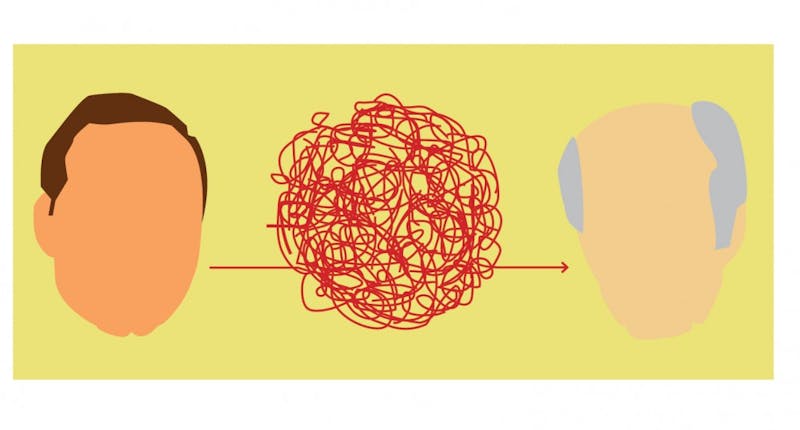Landing Page
The McDavis Issue
OU President Roderick McDavis is leaving February 17. The Post looks back at his time as Ohio's president. Click this box to read the rest of the stories from this issue.

Libby Lang
02.12.16
When a university president resigns, the transition that follows isn’t always a smooth one.
Tension at Ohio University peaked in 1974 when concerns over a dwindling university budget, low enrollment and turbulent national politics erupted into campus riots. Former university President Claude Sowle resigned from his position largely as a result of those demonstrations.
“Sowle was a president who faced crises with a deliberate calm and a calculating precision. But as the economic base of the University crumbled, so did Sowle,” read a column titled “Why it happened” that appeared in a May 1974 edition of The Post.
More than 40 years later, OU President Roderick McDavis’ final weeks in office were also marked by displays of discontent. A sit-in, a “sing-in” and a rally against U.S. President Donald Trump’s immigration ban were organized as McDavis planned to leave the university following his resignation announced last spring.
On Feb. 7, McDavis sent a university-wide email to cancel his farewell open house due to a possible protest scheduled to occur at the same time and place as the open house.
McDavis wrote that he and his wife “have concerns for our OUPD officers and want to avoid unnecessary run-ins between OUPD officers and protesters who feel they have legitimate issues and concerns.”
Though Sowle’s farewell party passed without incident, he sometimes had a difficult relationship with protest groups.
“President Claude R. Sowle yesterday indicated he thought the demonstration was a waste of time,” a 1974 Post article said of his reaction to a multi-issue rally. “He said the demonstrator’s actions were legal, but added they ‘have the right to make damn fools of themselves if they wish.’ ”
Sowle briefly reconsidered resigning but eventually reaffirmed his original decision.
“A man whose students riot, allegedly ‘physically assault’ him, demand his resignation and threaten to kidnap a member of his family all in one week might be considered a prime candidate for resignation, at least emotionally,” 1974 Post editor P.J. Bednarski wrote in a story titled “Sowle’s eight days in May: ‘insanity,’ support, indecision.”
Though all of the things Bednarski mentioned did occur and influence Sowle’s decision, several groups including Administrative Senate, Faculty Senate and Graduate Student Council asked him to stay.
“Some think Sowle was bad, most agree somebody else could have been a lot worse,” The Post explained in an article summarizing his farewell party.
Just as David Descutner will become OU’s interim president Feb. 18, former OU President Harry Crewson assumed his interim role after Sowle’s departure.
OU archivist Bill Kimok remembers Crewson as a friend, popular in the university community and responsible for bringing the osteopathic medical college to campus.
Not everyone shared that sentiment, however. As evidenced by a letter to the editor of The Post titled “Turn Crewson loose,” some thought he wasn’t accomplishing enough.
“In many ways I am in an awkward situation,” Crewson told The Post in 1975. “Some things that possibly should be moving I am holding in limbo until the announcement (of the new president) is made.”
After a year of searching, the 13-member OU Presidential Search Committee selected Charles Ping, a former Presbyterian minister, philosophy professor and football coach to replace Crewson.
Sowle gave Crewson a two-month orientation, though Crewson warned future university presidents that no introduction to the job could be sufficient.
“I think there is no way to understand the responsibility and demands of the position until you take over,” Crewson said.
Correction: A previous version of this report incorrectly spelled P.J. Bednarski's name. The article has been updated with the most accurate information.
Landing Page
OU President Roderick McDavis is leaving February 17. The Post looks back at his time as Ohio's president. Click this box to read the rest of the stories from this issue.